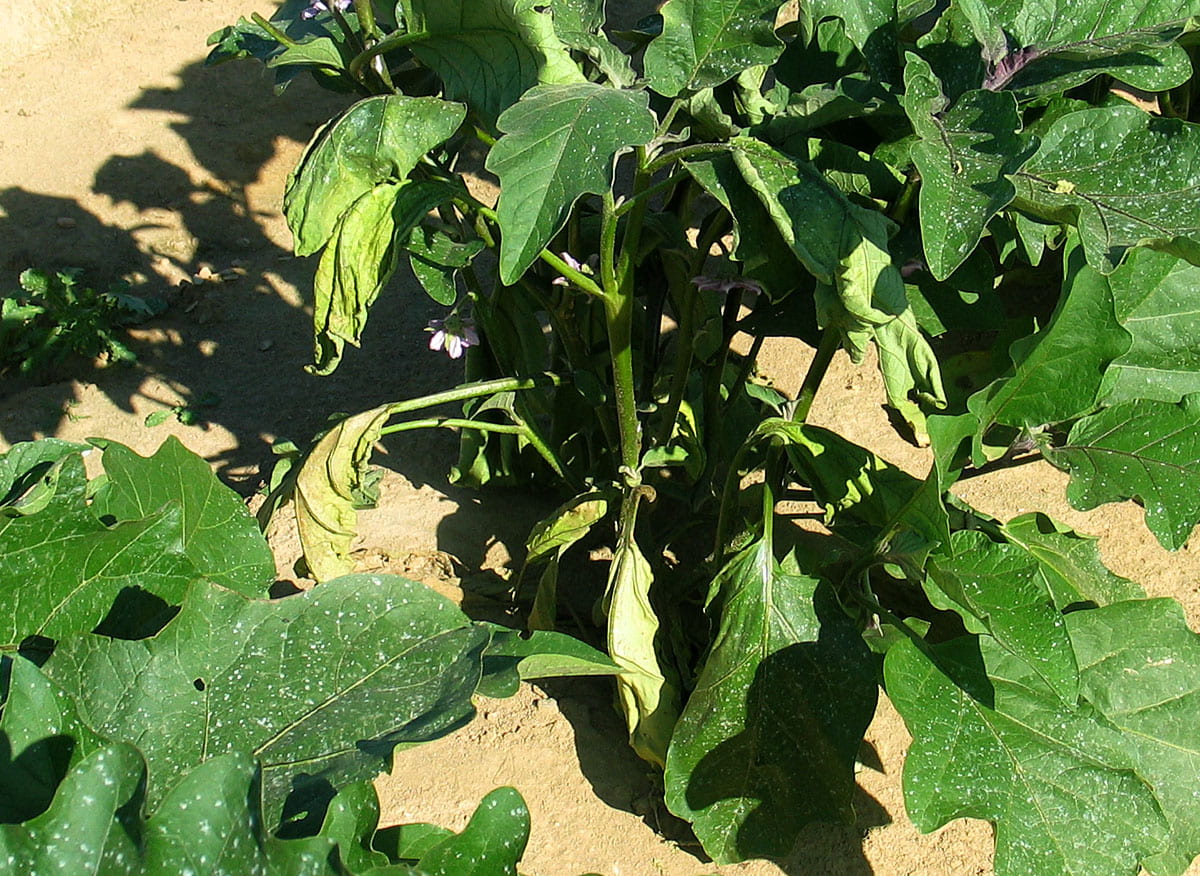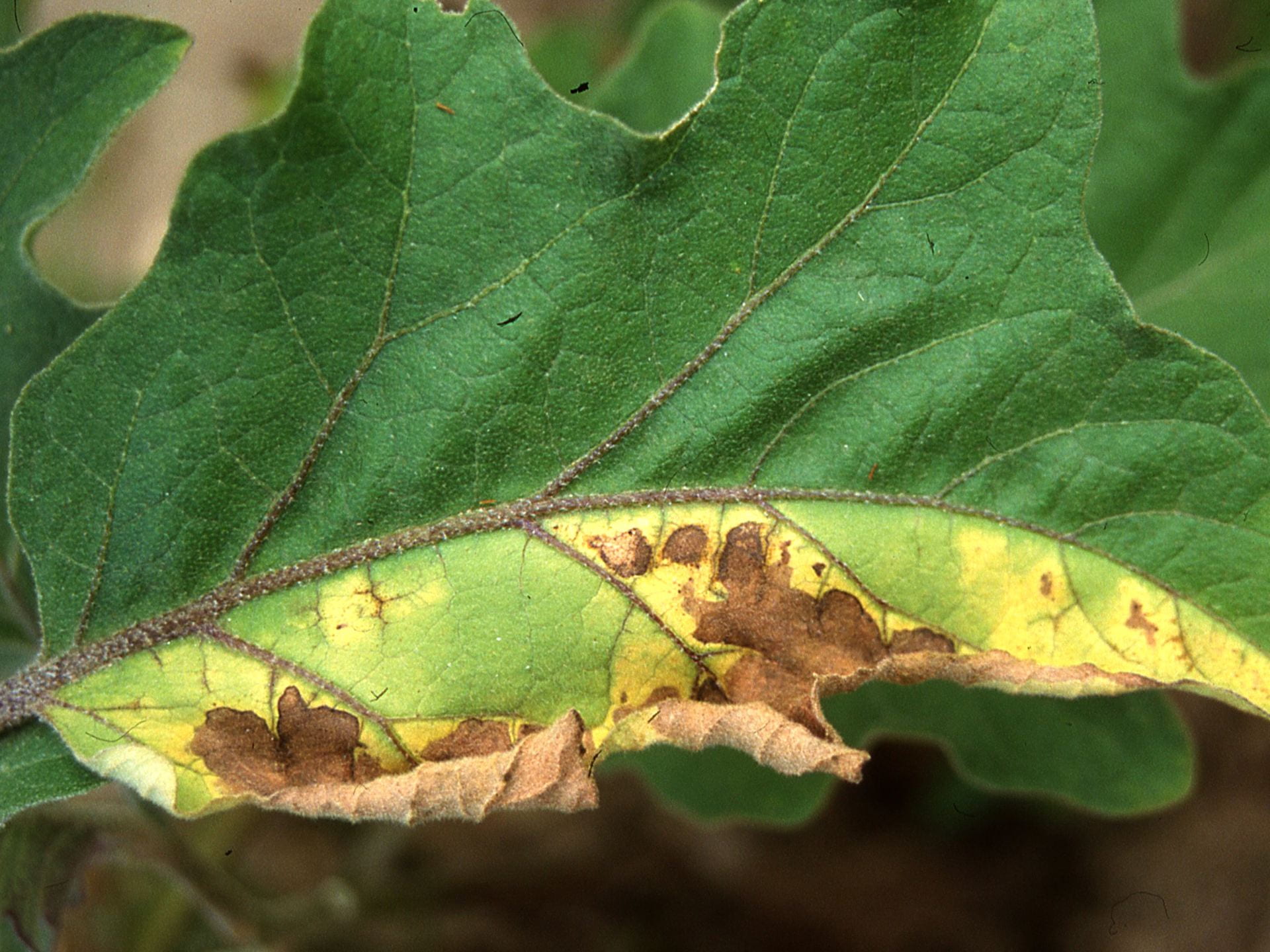Classic for this disease is wilt and yellowing occurring on one side of leaves and one side of the plant. This reflects the fact the casual fungus is clogging up vascular tissue providing water to one side of a leaf or of a plant. Wilting side of a leaf may be smaller than the unaffected side when pathogen was starting to clog vascular tissue before the leaf was fully expanded, giving the leaf a lopsided appearance. Vascular tissue inside the main stem (which is located between the outside of the stem and its center) becomes brown which is visible when the stem is cut in half longitudinally. Symptoms become more evident with increasing water demands as plants get larger and develop fruit, and when conditions are hot and dry. Thus late July is often when symptoms start to appear. In contrast, the entire plant wilts when infected by other root and crown rot pathogens (Pythium, Phytophthora, Rhizoctonia, Sclerotinia) because they uniformly infect all stem tissue.
Species of Verticillium that cause wilt in eggplant infect many other plants including other vegetables, peppermint, flowers, herbaceous perennials and trees. Eggplant is one of the most susceptible plants. Potato and strawberry are other important hosts. Other vegetable crops that Verticillium has been reported on include brassicas (cabbage, radish), cucurbits (cucumber, melons), lettuce, and other solanaceous crops (tomato, potato). The strain that attacks peppers has not been detected yet in the eastern US.
The initial source of Verticillium for a farm is infected plant material (potato seed, transplants, herbaceous perennials). The pathogen could also be moved in soil on equipment borrowed from another farm. The initial introduction may have occurred many years ago. Verticillium wilt was observed in a home garden on land that was a potato farm. The pathogen can be spread, albeit to a limited degree, during field operations that move soil, such as plowing and cultivating. Its population density will increase over time in a field through continuous planting of susceptible crops combined with movement with soil, resulting in increasing impact on yield.
This disease is difficult to manage because the causal Verticillium species can survive in soil for years because they produce a long-lived survival structure (microsclerotium) that can survive about 14 years, germinating when host roots grow near, and they can infect many other plants including Solanaceous weeds. Growing non-host plants like asparagus, beans, peas, and corn in rotation can reduce inoculum in the soil. Most grasses are also resistant, so including grass cover crops in rotations can be helpful.
Resistant eggplant varieties include Black King and Irene. Epic, Long Purple, Rosa Bianca, Casper, and Classic are varieties that appear able to maintain high yields despite infection.
There are several biopesticides that can be applied to soil before planting. Most of these are microbial. There are no conventional chemical fungicides.
Maintaining adequate soil moisture and fertility can minimize yield loss.
Other management practices include mustard biofumigation and chemical fumigation before planting.





